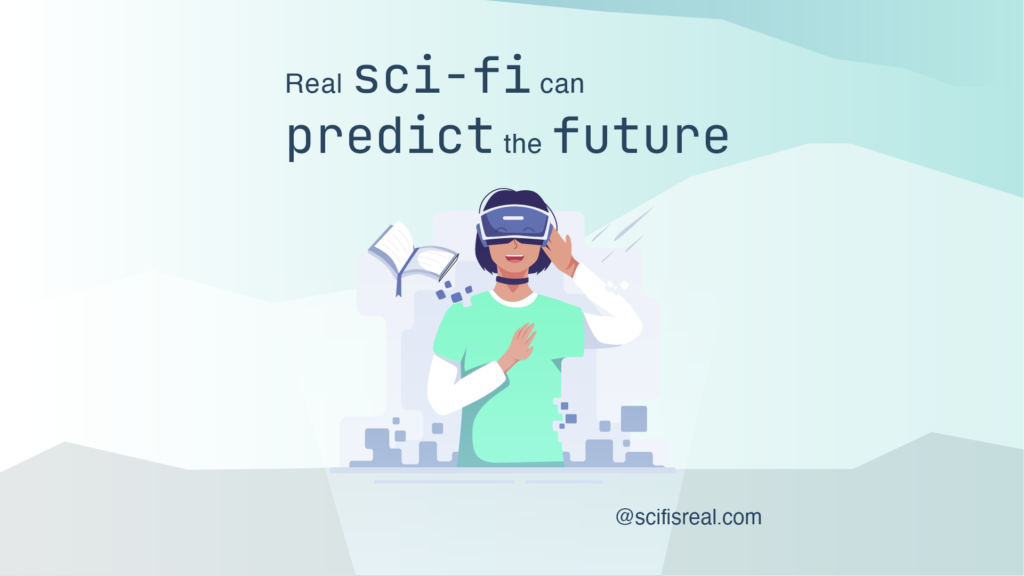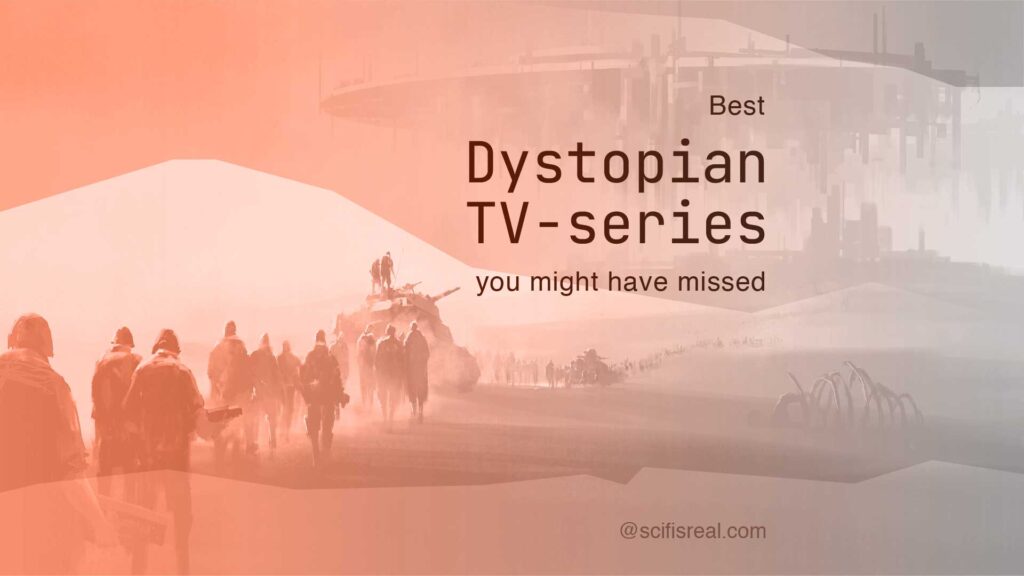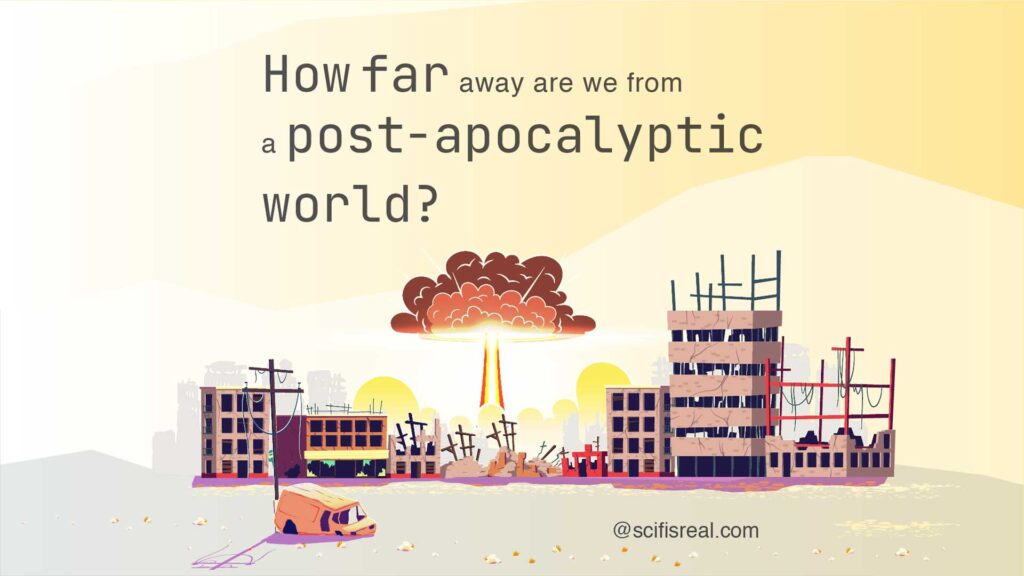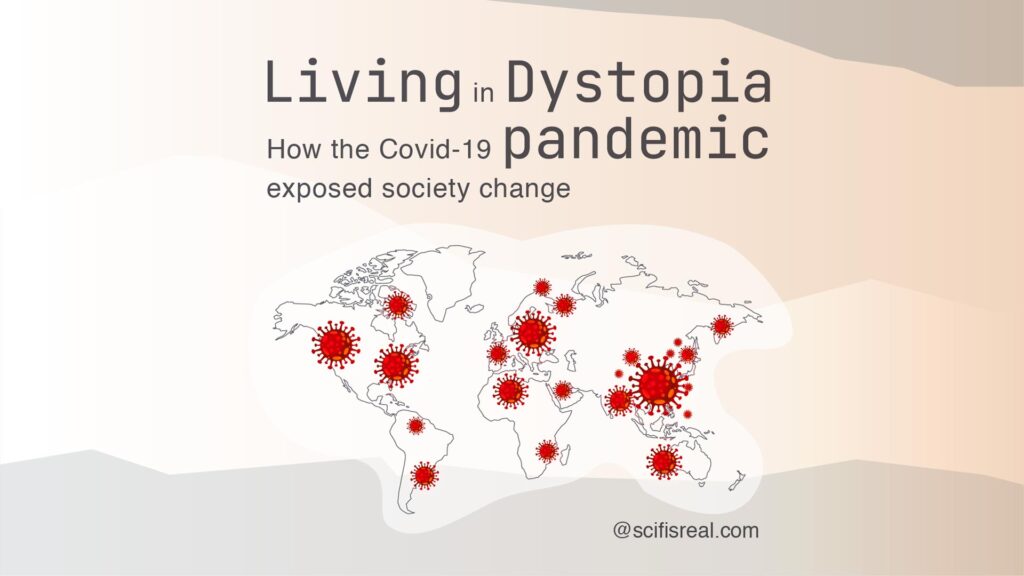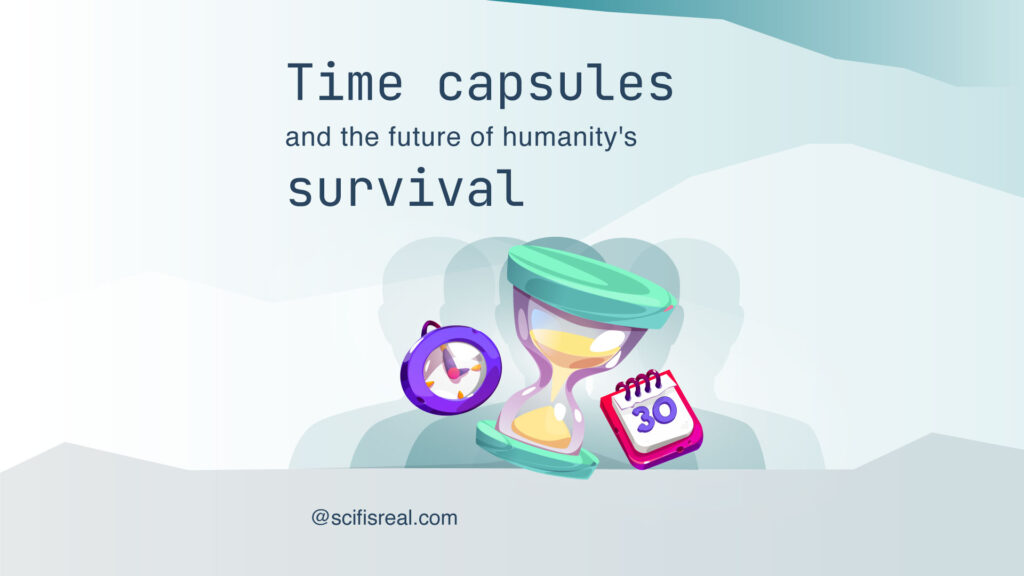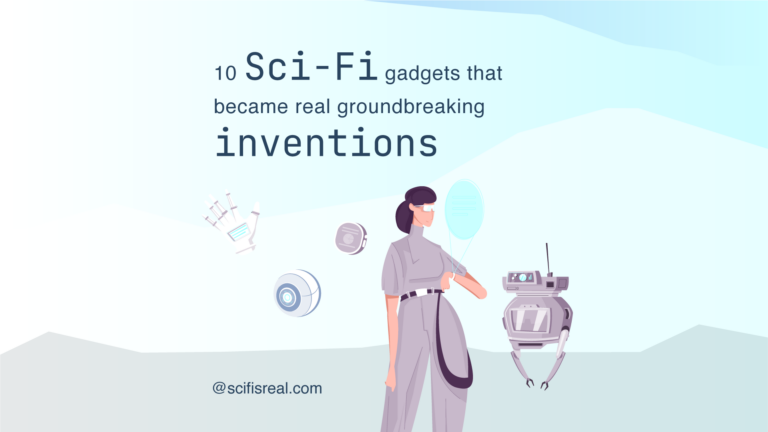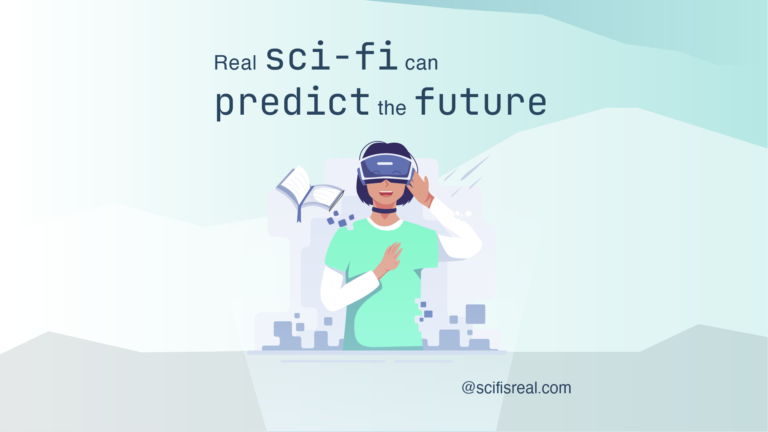Underground Cities: a Sci-Fi Future of Humanity
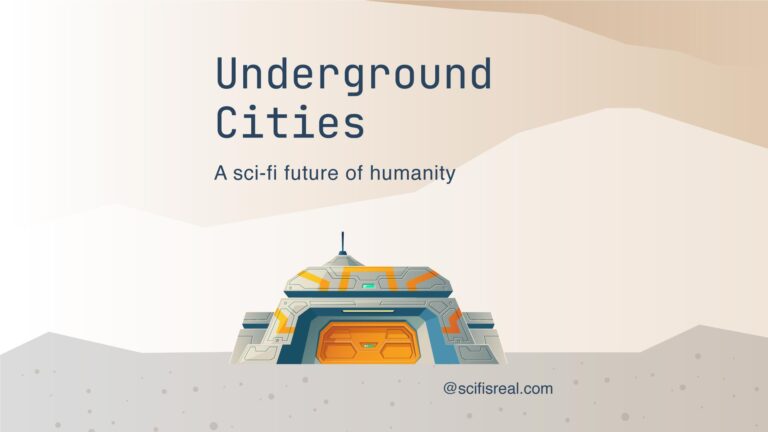
When the earth’s atmosphere can no longer sustain life, will underground cities provide the answer for the future of humanity? Science Fiction might just have the answer for what comes ahead but are preparations already being made in the real world for such a future? How will humanity cope with living in the confines of underground cities and the challenges that come in such environments?
As humanity continues to use up the earth’s resources, climate change and other environmental factors are becoming a growing concern. With the possibility of the earth’s atmosphere no longer being able to sustain life in the future, scientists and science fiction writers alike have proposed the idea of underground cities as a solution. But how feasible is this concept, and what challenges will humanity face if we have to resort to living in such environments?
Earth’s deteriorating atmosphere and the need for alternative habitats
The environment on earth is changing at an alarming rate. Scientists are predicting that the effects of climate change and other environmental issues will continue to worsen in the near future, leading to a situation where the atmosphere may no longer be able to sustain life as we know it. In response, many have proposed that humans should move underground, building cities and habitats beneath the surface of the Earth. This concept, while seemingly far-fetched and extreme, may be the only option available if humanity wants to ensure its survival in the face of an increasingly hostile environment.
An intriguing intersection of science fiction concepts and real-world preparations for underground living
The idea of living underground has long been a staple of science fiction, with books and movies routinely depicting an off-world or subterranean population. In the real world, however, there are already plans being made to create cities beneath the surface of the Earth. With governments already discussing ways to prepare for an uncertain future, it seems that living underground may soon become a reality.
In science fiction, underground cities are typically depicted as self-sufficient, technologically advanced societies that have survived some sort of apocalypse. However, in the real world, the concept of underground cities is still very much in its infancy. One of the earliest examples of a subterranean city described in Sci-Fi is the eponymous Marvel Comics superhero, The Sub-Mariner. In this story, the population of Atlantis moves underground to escape an oceanic apocalypse. Similarly, in “The City of Ember” by Jeanne DuPrau, humans build an underground city to survive an environmental disaster. Then there is the classic novel “Journey to the Center of the Earth” by Jules Verne, in which a scientist and his companions explore an underground world filled with strange creatures.
The Vision in Science Fiction
In science fiction, underground cities are typically depicted as self-sufficient, technologically advanced societies that have survived some sort of apocalypse. These cities usually feature complex systems for sustaining its inhabitants and contain a variety of technologies ranging from communication networks to energy sources. In many cases, the idea is that these cities are largely hidden away from the outside world in order to prevent it from being discovered and exploited by hostile forces.
This vision of underground living is somewhat utopian in nature as it presents a way for people to survive the end of the world, while still maintaining a sense of community and technological advancement. The idea also has a certain romanticism to it, as these cities offer an opportunity for humans to explore their own depths and discover hidden secrets that have been hidden away from the surface world for generations.
In addition, underground living offers a unique way to experience nature and explore different landscapes without having to leave the comfort of the city. In particular, many science fiction works have depicted vast underground lakes and oceans that provide a perfect setting for scuba diving or even submarine exploration. With this in mind, it’s easy to see why underground living has a certain allure and appeal.
The logistics, societal dynamics, and challenges of living underground in science fiction works
Science fiction works often explore various aspects of the logistics, societal dynamics, and challenges associated with living underground. Many stories focus on the difficulties of maintaining a reliable energy source while ensuring that all inhabitants have access to food and water. In addition, these works may explore how these societies will govern themselves in an isolated environment and how people can keep their spirits high when they are unable to go outside or experience the beauty of nature.
The different forms of communication that will be needed to keep an underground society functioning is often explored. This includes consideration for how these societies will stay connected with each other and potentially have access to new technologies such as the internet. In terms of societal dynamics, these stories may discuss how conflicts among settlers will be managed and how a sense of belonging can be established in an isolated environment.
Overall, science fiction give us the opportunity to explore the possible logistics, societal dynamics, and challenges of living underground and provide us with new ideas on how we might use advances in technology to make this way of life more feasible. It is important for us to consider these creative solutions and use them as a way to inspire innovation.
A list of essential reading of Science Fiction works dealing with Underground Cities:
- “Wool” by Hugh Howey: This novel is set in a post-apocalyptic world where people live in a massive underground silo, isolated from the toxic outside world.
- “Metro 2033” by Dmitry Glukhovsky: Set in the Moscow Metro system after a nuclear apocalypse, the surviving humans have created their own societies within the tunnels.
- “The City of Ember” by Jeanne DuPrau: This book follows a young protagonist living in a city entirely underground, where the inhabitants are unaware of the outside world.
- “The Time Machine” by H.G. Wells: Although not entirely focused on underground cities, this classic novel features a futuristic world where the last remnants of humanity have retreated below ground.
- “The Chrysalids” by John Wyndham: In a post-apocalyptic world, a group of telepathic children seeks refuge in an underground city to avoid persecution.
- “The Metro Trilogy” by Dmitry Glukhovsky (includes “Metro 2033,” “Metro 2034,” and “Metro 2035”): Continuing the story from “Metro 2033,” these books explore the struggles of humanity living in the Moscow Metro tunnels.
- “Dark Life” by Kat Falls: In a future where rising sea levels have forced people to build underwater and underground cities, the story follows a young boy who discovers the mysteries of the deep.
- “The City of the Sun” by David Levien: In this thriller, a New York City police officer discovers a hidden underground metropolis beneath Manhattan, with its own society and rules.
- “The House of Stairs” by William Sleator: A group of teenagers finds themselves trapped in a mysterious, seemingly endless, and shape-shifting stairway labyrinth that leads to an underground city.
- “The Caves of Steel” by Isaac Asimov: In a distant future, humanity has colonized multiple planets and lives in underground cities on Earth while robots work on the surface.
Underground living: a way of addressing climate change
As our planet continues to experience the drastic effects of global warming, it is important for us to consider new approaches and solutions that will enable us to mitigate its devastating consequences. One possible approach is the idea of underground living. This solution is not only effective in providing an alternative form of shelter for people, but it could also help to reduce the amount of energy and resources that are needed to maintain a livable environment.
Through this method, we can create sustainable communities that are able to provide their own food and water sources while protecting themselves from the elements. In addition, these underground societies could potentially be used to harvest clean energy, such as geothermal power. By utilizing this concept, we can help reduce our collective carbon footprint and create innovative ways of living that are more in tune with the planet.
Science is warning us for an eminent solution
Scientific evidence of climate change and environmental degradation is both robust and compelling. The Intergovernmental Panel on Climate Change (IPCC) reports that the global temperature has risen by 1.09°C since the pre-industrial period. This increase in temperature is due to the exponential growth in greenhouse gas emissions, primarily carbon dioxide and methane, resulting from human activities such as fossil fuel burning and deforestation.
Moreover, the National Aeronautics and Space Administration (NASA) has documented the shrinking of the Arctic sea ice, which has declined at a rate of 13% per decade since satellite measurements began in the late 20th century. This has profound implications, as polar ice is crucial for regulating Earth’s temperature by reflecting sunlight back into space.
Additionally, the Earth’s atmosphere is suffering from significant degradation. According to the World Health Organization, air pollution, much of it from anthropogenic sources, contributes to an estimated 7 million premature deaths annually. This underlines the pressing need for innovative, sustainable solutions like underground living to address the escalating crisis of climate change and environmental degradation.
Benefits and challenges of living underground
Benefits of underground living
The idea of living beneath the earth’s surface has many potential benefits. Underground cities would provide refuge from the increasingly volatile outside world, and because of their inherent nature would be more secure than those built on the surface. Additionally, as underground cities are not exposed to weather conditions like storms or floods, they can be much safer for long-term settlement than traditional above-ground cities.
Living underground also has a range of potential economic benefits. As the environment is much more stable and predictable, it would be easier to plan and manage resources such as energy and water in an efficient way. Furthermore, as these cities would require fewer resources than their above-ground counterparts, they can potentially reduce or even eliminate the need for certain taxes.
Challenges of living Underground
One of the biggest obstacles to creating an underground city is providing a reliable source of food, water, and oxygen. In such an environment, traditional farming is not possible, and creating an artificial ecosystem that can sustain human life is a significant challenge. Additionally, the lack of sunlight means that alternative sources of energy will need to be developed to power an underground city.
Another obstacle to the development of underground cities is the cost. Building underground requires extensive excavation, reinforcement, and ventilation systems, which can be prohibitively expensive. Additionally, underground cities must be designed to withstand earthquakes and other natural disasters, which further adds to the cost.
If underground cities were to become a reality, they would also present a range of social and psychological challenges. Living in such closed and confined spaces could lead to increased stress and mental health issues. There may also be issues of social isolation, as people would be cut off from the outside world.
Biodiversity would also be a concern, as many species may not be able to survive in an underground environment. Finally, the lack of sunlight could lead to problems such as Vitamin D deficiency and other medical issues.
Examples of real-world science experiments preparing for a future for humans living underground
Although the idea of underground living may seem far-fetched, there have been some attempts to make it a reality. One notable example is The Sanford Underground Research Facility, the largest scale underground physics lab which was created in response to rising concerns about climate change and its implications on our planet’s future.
A deep underground research facility called The Bio-SPHERE Project was also recently launched by the University of Birmingham in North Yorkshire in one of the deepest mines in the UK.
“The Bio-SPHERE project promises to help answer some key logistical questions in establishing sustainable living conditions in remote, subterranean environments and in doing so will significantly contribute to the essential preparations for our collective long, difficult, and exciting journey ahead”.
In addition, NASA has conducted a number of experiments in an underground laboratory. This facility is designed to simulate life on Mars and generate data that can be used to design suitable habitats for future human exploration of the Red Planet.
Finally, China has created the world’s first underground city in Beijing, with plans to develop a network of underground cities across the country. This project is designed to help alleviate overcrowding in Beijing and other major cities, while also providing protection against natural disasters.
Although these projects are still in their early stages, they provide a glimpse into what our future may hold if humans decide to move underground for protection from the elements or as a response to a long-term disaster. Underground living may be an uncomfortable situation for some, but these projects aim to make it a viable option for generations to come. With the right technology and research, human beings could one day establish permanent settlements on other planets or beneath the surface of our own. Who knows what possibilities may arise from such an endeavor?
The feasibility of underground cities hinges on significant advancements in geology, engineering, and architecture. Geological breakthroughs have enabled a better understanding of soil composition, tectonic behaviors, and underground water reservoirs, vital for predicting and managing potential risks associated with subterranean construction. In the field of engineering, innovations like tunnel boring machines, advanced ventilation systems, and seismic-resistant structures have emerged, making it possible to safely create extensive underground networks, ensuring air quality, and improving resilience against earthquakes. Meanwhile, architectural advances have led to the development of designs that optimize space usage, integrate natural light, and consider aesthetic appeal in an underground context. These innovations aim to make underground living not just possible, but also comfortable and sustainable.
Ethical Considerations and Sustainability of Underground Cities for humans
Though the potential of underground cities is often seen as a promising solution to overcrowding, displacement, and resource scarcity due to natural disasters or climate change, their impact on human beings should not be taken lightly. The construction of underground cities requires resources like energy, land, and water that may not have been available before. Displacement of existing communities could occur if space is needed for the construction of these infrastructures. In addition, environmental and economic consequences could arise from underground cities that are not properly managed, such as increased air pollution and high costs associated with their maintenance.
For an underground city to be a sustainable solution, proper planning and consideration must take place. This includes carefully assessing the impact it will have on existing communities, and ensuring that its long-term implications are minimized. Monitoring systems need to be put in place to prevent any negative impacts on humans and the environment. In addition, safety measures should be planned for in case of possible disasters or accidents.
Addressing Sustainability Concerns for Underground Cities
One valid concern when considering underground cities is the issue of resource management. In an environment where sunlight is not readily available, alternative means of sourcing light and heat must be implemented. This could be achieved through renewable energy sources, such as solar or wind power, enabling communities to maintain sustainability while minimizing reliance on more harmful energy options.
Waste disposal in an underground setting likewise poses unique challenges. Innovative solutions, like advanced waste recycling systems, should be employed to manage waste effectively and reduce the risk of pollution. Such systems would process waste on-site, converting it into energy or other reusable materials, thereby ensuring a clean, safe, and sustainable living environment.
Potential impacts on the surrounding environment must also be accounted for. Underground cities could influence groundwater levels and soil stability, and these factors should be evaluated carefully in the planning stages. Moreover, construction should be conducted in a manner that minimizes disruption to local ecosystems, with restoration efforts made where necessary.
Ultimately, with conscious planning, resourceful innovation, and stringent regulations, the potential negative impacts of underground living can be mitigated, paving the way for a sustainable subterranean future.
Underground Cities: a hopeful Future
The promise of underground cities is undeniably exciting: a space for living, working, and thriving, sheltered from the noise and pollution of our increasingly crowded cities. Underground cities could be designed to promote sustainability, with renewable energy sources providing light and heat, waste disposal systems that turn discarded into resources and careful consideration for the local environment in construction and development.
While the idea of underground cities may be appealing to science fiction writers and futurists, it is clear that the practical realities of creating such environments are challenging. However, given the pressing environmental concerns facing humanity, it is important that we explore all potential avenues for survival and sustainability. Perhaps with further technological advances and innovation, we may see the development of underground cities in the future. In the meantime, we must continue to work towards preserving the health and resilience of our planet.
At this point in time, the potential for underground living is still largely theoretical and has yet to become a reality. However, with further technological advancements, it’s possible that we may one day see large-scale cities built beneath the surface of the Earth. Until then, it’s up to us to dream and imagine a world where humans can live and thrive in an underground utopia.
